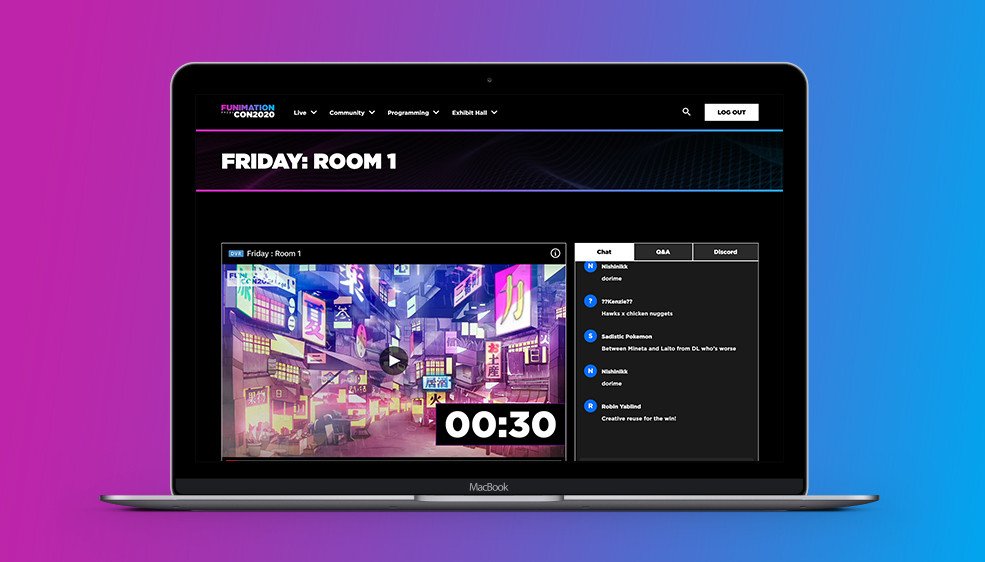Let's get real: A look at authenticity and relevancy in experiential content.
One of my favorite things to do over the longish winter break is to dig into a new book. This year I was excited to start Sally Rooney’s latest effort, Beautiful World, Where Are You, which is a novel about four friends living in Ireland. Rooney has been hailed as the first great millennial novelist for her stories of love and late capitalism. She has also been called, “Salinger for the Snapchat generation.” Because it is widely felt that Rooney has an incredibly keen eye for cultural relevance, I read with close attention the following passage about a business event on page 69:
“She asked him about the conference he was attending in London and he described at length a ‘conversation session’ entitled ‘Beyond the EU: Britain’s International Future.’ It was just four identical middle-aged guys in glasses, Simon said. I mean, they looked like photoshopped versions of each other.”
There she was, describing an event in a most unflattering way. And because writers typically write what they know or have experienced, it struck me that she’s likely had this experience and it left enough of an impression that she would include it in her novel in such a way. This had me wondering, have events in general earned the reputation of being middling, banal, whitewashed versions of the same old thing? Was she going so far as to say this event was misogynist and bigoted? Maybe. At the very least, one could glean that she meant it didn’t deliver on authenticity or relevancy. And I would agree with her that these are two of the biggest problems with events today.
Is content king without authenticity and relevancy?
For years, people have been talking and writing about the importance of Content. We say, “Content is king!” We talk about “content-driven [insert any number of words here].” And we have been extolling the importance of delivering the right content, to the right people at the right time. (Don’t believe me? Google the phrase. There are over 8 trillion results!) And, yes, it’s mostly true. The problem with that last statement is that it’s self-serving. It’s written from the point of view of the brand or the marketer to target specific audiences and get them to behave a certain way, not necessarily to serve content that will delight those audiences.
Now, I realize persuading people is in the job description of a marketer, but does it need to be so heavy-handed? If we do our jobs right—that is to say, if we serve content that is authentic and relevant, content that people want—we will create experiences that are so great that people will actually want to interact with them. Because being authentic and relevant is how we gain trust. We can’t just create content that suits our needs within a vague set of demographic interests. Without first building trust, we can go nowhere. We must be much more thoughtful about the content we present and how we present it.
I can’t tell you how often events are planned around an agenda or run of show, with content slotted into time blocks at the last minute. And just as you might imagine, the content often falls short of the intended goals, which means the attendee experience also falls short. But how could it not when it was essentially an afterthought? If we instead looked at what a brand is genuinely well positioned to speak about and overlayed that with what the audience really wants to hear about, and then built an event around that we’d be delivering something that is both authentic and relevant.
And when we’re able to authentically deliver content that people want, we can become their trusted source. In this way, we need to be building events around that authentic and relevant content, not the other way around as is so common today. Additionally, we need to ensure those delivering that content that is representative of the audiences we want to reach. For example, if our primary audiences are diverse millennials, a whitewashed panel of middle-aged men (as was portrayed in Ms. Rooney’s book) is not going to come across as authentic nor relevant. So how do we do that?
First, you must know your audience.
If you’re going to find the sweet spot of the Venn diagram—that area where your brand expertise and your brand goals overlap with what your audience is interested in—you must first understand your audience in a real way. What you thought you knew about your audience has likely changed in the last couple of years. COVID-19 is the most significant crisis to impact our collective population and it has not only changed the way people communicate with each other but also with brands. It has shaped new ways of thinking and responding. It has spurred monumental self-reflection that has also impacted our belief systems, creating new priorities. We know that it’s more important than ever that we convey messages that are personally relevant and aligned to an individual’s situation and values. We know that people care more about value-related messages than ever before (Nielsen just released a study showing value-oriented ads jumped up 10% from their last ‘Global Trust in Advertising’ report.) Messages aligned merely on demographics such as age and gender are not enough. We must create messaging and experiences that deliver a personal, human connection by building audience profiles with multiple dimensions that influence the purchasing behavior — from trends to psychographics to attitudinal characteristics.
The EY Future Consumer Index, which has conducted five waves of research with 14,500 individuals in 20 countries since the start of the pandemic, has identified five different cohorts of consumers:
Affordability first (32% of consumers): Living within their means and budget, focusing less on brands and more on product functionality.
Health first (25%): Protecting their health and that of their family, choosing products they trust to be safe and minimizing risks in the way that they shop.
Planet first (16%): Trying to minimize their impact on environment and buying brands that reflect their beliefs.
Society first (15%): Working together for the greater good, buying from organizations they find to be honest and transparent.
Experience first (12%): Living in the moment to make the most of life, often making them open to new products, brands, and experiences.
This is just one way to look at and categorize audiences and there are likely other characteristics and traits that would be important to consider. As we develop content strategies that will ultimately drive our customer journey, it is useful to understand the mindset of our audience. If we know what matters to them, we can better build content plans that will deliver on our goals of driving inspiration, engagement, or even sales, because we are delivering content they find useful, relevant and authentic.
A few examples of authentic and relevant experiential content.
When content delivers on being real, it succeeds. I saw this when I helped develop the Facebook Boost My Business Spotlights franchise, which featured stories of small business resiliency and creative problem solving. Each 3–5-minute video follows small businesses around the world who are pivoting and growing online during a time of challenge. It places the business owners at the center of the story, letting them share their own personal journey through storytelling.
This is how the founders of Honeydoe Kitchen have found over 12 million viewers of their story on the Facebook platforms. (Don’t forget to check out the other episodes in the series, too!)
Another example is last year’s MLB Field of Dreams baseball game that was built by BaAM Productions, Populous and BrightView.
As the first MLB game played in the state of Iowa, the Field of Dreams was developed as part of the League’s initiative to create memories at unique venues and bring professional baseball to fans who wouldn’t normally have access. It was the most-watched regular season baseball game in 16 years!
And finally, there’s FunimationCon 2020, a virtual event centered around content, visual art, and community.
Produced by Freeman, this award-winning two-day event featured vivid on-screen visuals and a platform designed to feel like an anime lover’s dream. There were a wide variety of live and pre-recorded sessions with speakers and voice actors, virtual concerts, an interactive swag quest, official merchandise sales, and even a virtual cosplay forum. On top of eye-catching designs, easy-to-navigate pages, and interactive sessions, FunimationCon 2020 featured energetic hosts to keep attendees amped up throughout the experience. With nearly 15 million minutes viewed, 108K chat comments and an NPS score of 69+, the event was a success by any measure.
Tell me!
What is your favorite example of authentic and experiential content? How do you ensure that your events are relevant and meaningful?”



